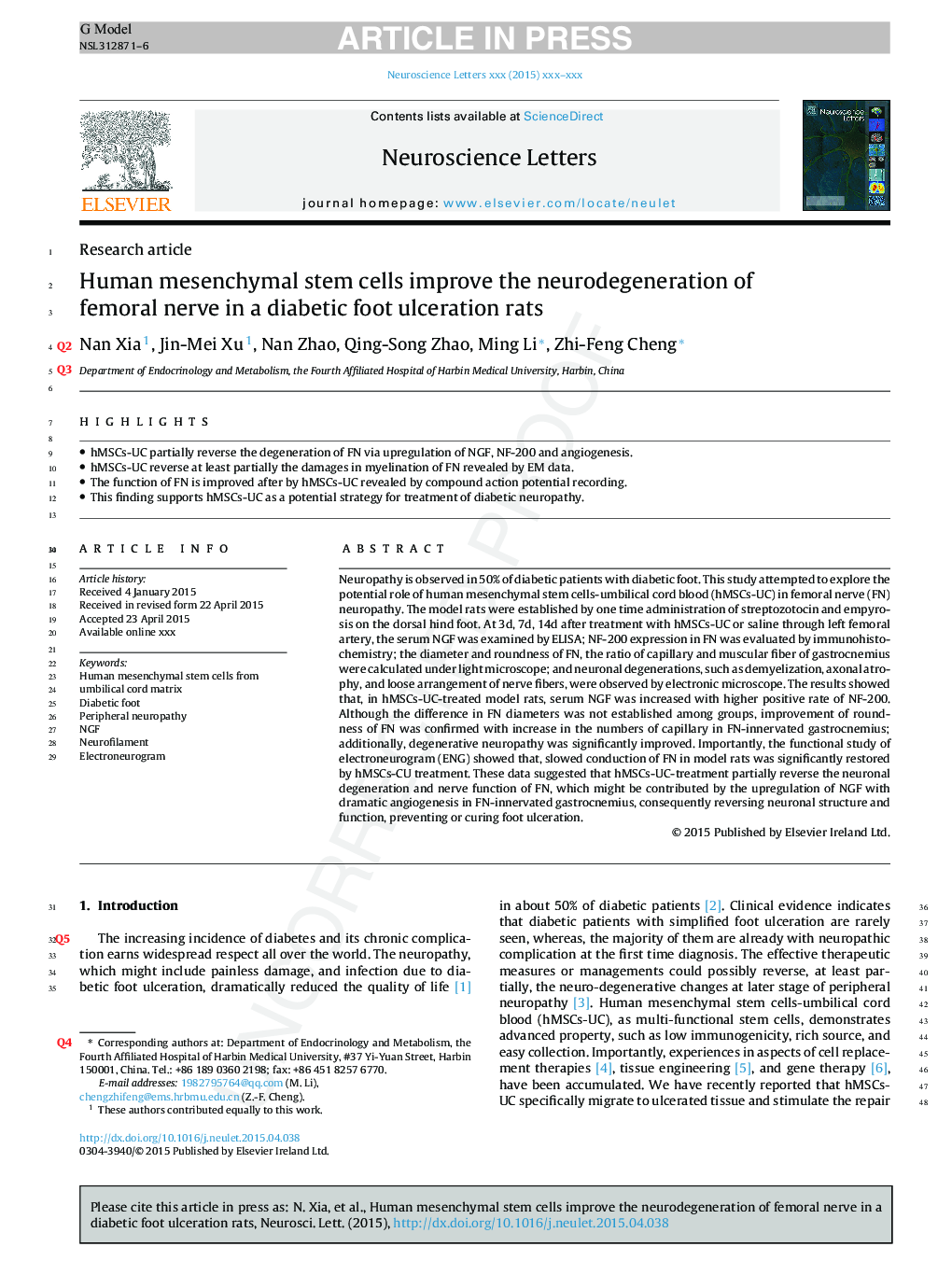| Article ID | Journal | Published Year | Pages | File Type |
|---|---|---|---|---|
| 6280707 | Neuroscience Letters | 2015 | 6 Pages |
Abstract
Neuropathy is observed in 50% of diabetic patients with diabetic foot. This study attempted to explore the potential role of human mesenchymal stem cells-umbilical cord blood (hMSCs-UC) in femoral nerve (FN) neuropathy. The model rats were established by one time administration of streptozotocin and empyrosis on the dorsal hind foot. At 3d, 7d, 14d after treatment with hMSCs-UC or saline through left femoral artery, the serum NGF was examined by ELISA; NF-200 expression in FN was evaluated by immunohistochemistry; the diameter and roundness of FN, the ratio of capillary and muscular fiber of gastrocnemius were calculated under light microscope; and neuronal degenerations, such as demyelization, axonal atrophy, and loose arrangement of nerve fibers, were observed by electronic microscope. The results showed that, in hMSCs-UC-treated model rats, serum NGF was increased with higher positive rate of NF-200. Although the difference in FN diameters was not established among groups, improvement of roundness of FN was confirmed with increase in the numbers of capillary in FN-innervated gastrocnemius; additionally, degenerative neuropathy was significantly improved. Importantly, the functional study of electroneurogram (ENG) showed that, slowed conduction of FN in model rats was significantly restored by hMSCs-CU treatment. These data suggested that hMSCs-UC-treatment partially reverse the neuronal degeneration and nerve function of FN, which might be contributed by the upregulation of NGF with dramatic angiogenesis in FN-innervated gastrocnemius, consequently reversing neuronal structure and function, preventing or curing foot ulceration.
Related Topics
Life Sciences
Neuroscience
Neuroscience (General)
Authors
Nan Xia, Jin-Mei Xu, Nan Zhao, Qing-Song Zhao, Ming Li, Zhi-Feng Cheng,
